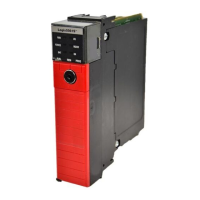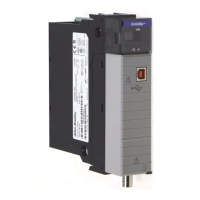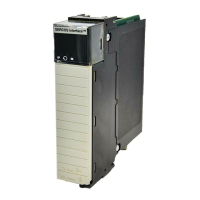60 Rockwell Automation Publication 1756-RM093J-EN-P - April 2018
Chapter 6 Safety Application Development
Storing and Loading a
Project from Nonvolatile
Memory
In revision 18 or later, GuardLogix controllers support firmware upgrades and
user program storage and retrieval by using a memory card. In a 1756
GuardLogix system, only the primary controller uses a memory card for
nonvolatile memory.
When you store a safety application project on a memory card, Rockwell
Automation recommends you select Remote Program as the Load mode, that is,
the mode the controller should enter following the load. Prior to actual machine
operation, operator intervention is required to start the machine.
You can initiate a load from nonvolatile memory only under these conditions:
• If the controller type specified by the project stored in nonvolatile memory
matches your controller type
• If the major and minor revisions of the project in nonvolatile memory
matches the major and minor revisions of your controller
• If your controller is not in Run mode
Loading a project to a safety-locked controller is allowed only when the safety
task signature of the project stored in nonvolatile memory matches the project on
the controller. If the signatures do not match or the controller is safety-locked
without a safety task signature, you must first unlock the controller before
attempting to update the controller via nonvolatile memory.
Force Data
All data contained in an I/O, produced, or consumed safety tag, including
CONNECTION_STATUS, can be forced while the project is safety-unlocked
and no safety task signature exists. However, forces must be uninstalled, not just
disabled, on all safety tags before the safety project can be safety-locked or a safety
task signature can be generated. You cannot force safety tags while the project is
safety-locked or when a safety task signature exists.
Inhibit a Module
You cannot inhibit or uninhibit safety I/O modules or producer controllers if the
application is safety-locked or a safety task signature exists.
Follow these steps to inhibit a specific safety I/O module.
1. In RSLogix 5000 software, right-click the module and choose Properties.
2. On the Module Properties dialog box, click the Connection tab.
If you unlock the controller and initiate a load from nonvolatile memory,
the safety-lock status, passwords, and safety task signature will be set to
the values contained in nonvolatile memory once the load is complete.
You can install and uninstall forces on standard tags regardless of the
safety-locked or -unlocked state.

